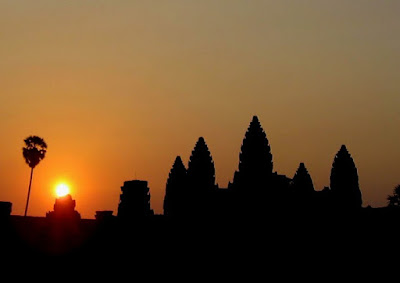Happy Easter to all my friends and family who celebrate this special religious event. Most associate eggs with Easter, so I thought this photo of quail, duck and chicken eggs for sale at the morning markets in Luang Prabang in Laos on Friday morning was most appropriate. Jim ( my husband) and I arrived home yesterday from our amazing, wonderful, exciting, spiritual and inspiring trip to Cambodia, Vietnam and Laos. You may have guessed we enjoyed all the different experiences and I will be blogging about some of the mjore interesting stories with photos over the next couple of weeks.
Whatever beliefs you have, there is no denying that one of the most spiritual and peaceful places in the world is Angkor Wat in Cambodia. When I reveiwed my holiday photos and came across this one, I am reminded that " Easter tells us that life is to be interpreted not simply in terms of things but in terms of ideals." ~ Charles M. Crowe
Keep checking my blog over the next few weeks for more wonderful stories and images of Cambodia, Vietnam, and Laos.
Whatever beliefs you have, there is no denying that one of the most spiritual and peaceful places in the world is Angkor Wat in Cambodia. When I reveiwed my holiday photos and came across this one, I am reminded that " Easter tells us that life is to be interpreted not simply in terms of things but in terms of ideals." ~ Charles M. Crowe
Keep checking my blog over the next few weeks for more wonderful stories and images of Cambodia, Vietnam, and Laos.


Comments
Post a Comment
Thanks for reading my blog and please share your thoughts about my blog post by leaving a comment.Your comment won't appear immediately as comments are verified before publication in an effort to reduce the amount of spam appearing. Anonymous comments will not be published.